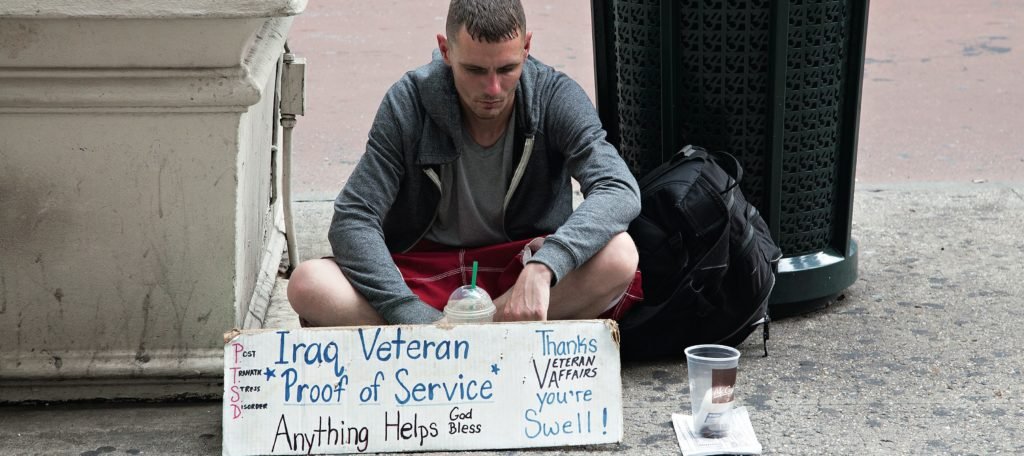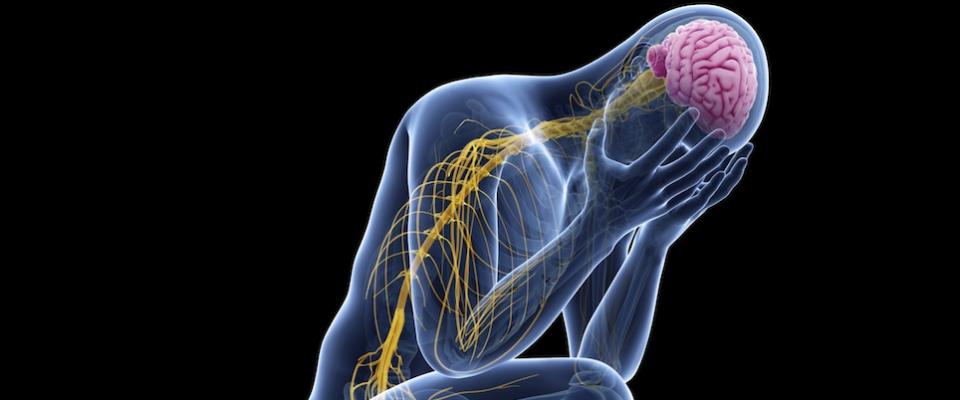Can changes based on nutrition, toxics, or a mother’s touch be biologically inherited?
Darlene Francis, clad in a blue zip-up hoodie and running shoes, is talking about the frontal cortex, decision-making, and high-stress profiles in rats, when she suddenly shifts the focus to poor, single, inner-city moms—that is to say, stressed-out humans. Working with rodents, the behavioral neuroscientist points out, makes it easier to study and talk about social problems without stirring up a political battle. But if you want to understand the effects of maternal stress on childhood development, Francis says, just look at her rats.
While still a grad student, Francis conducted a cross-fostering experiment in which she swapped pups between a litter of rats bred for calmness, and another that was predisposed to anxiety. The genetically calm mothers also tended to be better nurturers, licking and grooming their pups, than the less-attentive anxious mothers. But when a calm, nurturing mother raised the genetically anxious pup that had been added to her brood, the adoptee switched tendencies. The anxious rat behaved calmly throughout life, performed better in cognitive tests, and was more willing to explore new environments. The calm mother’s behavior, Francis discovered, had caused permanent changes in the operations of the anxious rat’s genes. Even more stunning: The acquired traits—calmness and nurturing habits—were passed on to the anxious rat’s next generation.
In a rapidly developing field called epigenetics, scientists are discovering that nutrition, exposure to toxics, even a mother’s touch (or lack thereof) can cause heritable changes in gene expression without any corresponding change in DNA sequence. This is a radically different view of heredity, one that adds another layer of complexity to the common conception of DNA as the complete and immutable set of instructions for life.
One oft-cited experiment in the emerging field was conducted by Randy Jirtle, a pathologist at Duke University, who in 2003 found for the first time that a mother’s nutrition during pregnancy could alter gene expression. Jirtle discovered that simply by feeding Agouti mice four common nutritional supplements before, during, and after pregnancy, he could change the offspring from chubby and yellow to thin and brown. The nutrients, he discovered, added a chemical layer to DNA that slowed the activity of a gene involved in both coat color and appetite. The modification also lessened the animals’ susceptibility to obesity, diabetes, and cancer. Nothing in the genome itself, however, had been changed.
Findings like these, which undermine the centrality of the genome and add a new twist to Darwin’s theory of evolution, were bound to excite controversy. Early researchers in the field were warned that their careers would suffer if they persisted in looking outside the genome to explain human development and disease.
“It’s a very different way of thinking about life, really,” says Jirtle. Francis still remembers the chilly reactions she received the first time she presented a poster at a scientific conference. More than one geneticist, she says, walked away upset. A colleague in integrative biology who works closely with Francis gives similar accounts.
With the successful sequencing of the human genome, the news in recent years has been filled with reports about the isolation of genes said to “cause” everything from diabetes to voter turnout. DNA has run wild in the popular lexicon, to the point that fashion execs now blithely talk about “consumer DNA,” and the culinarily proficient are said to have “breakfast in their genes.” Such usage hints at something larger; namely, that in the question of nature versus nurture, we’ve embraced the view that our fates are written in genetic code. But increasingly, researchers are finding that genes don’t tell the whole story.
Asthma is one of those diseases that has been explained over the past century as the product of an excitable nervous system, poor mothering, too little dirt in the household … or, in recent years, genetic destiny. Just last fall, when scientists pinpointed a gene they believe raises asthma risk by as much as 60 percent, journalists proclaimed the triumph of genes over environment. But John Balmes, a pulmonary physician who directs the Center for Occupational and Environmental Health at UCSF, favors a more complicated picture.
Balmes compared Berkeley freshmen from the Bay Area to those who grew up in Los Angeles. Students from the smog-ridden south, he found, had the narrow airways that typify chronic lung injury. But the extent of the damage differed according to two very common gene variants. Asthma, Balmes expects, will pattern similarly, with pollution interacting with genes to worsen the allergic response that triggers asthma attacks. “Environmental factors,” he concludes, “can affect genetic responses, and genes can affect responses to the environment.”
Francis would no doubt agree with Balmes. Her work has been among the first to show, in fact, that epigenetic influences go far beyond the common conception of “environment” to include things such as social interactions. With that in mind, her lab collaborates with scientists across the spectrum: in molecular biology, the School of Public Health, psychology, and even moral reasoning. The links may strike some hardcore geneticists as alien territory, but with findings like Francis’s, these doubters too may soon find themselves arm-in-arm with the “soft” sciences. Darlene Francis considers herself a member of both camps. “I’m a Ph.D. in neuroscience, but at heart a social worker,” she says.
At one point in the conversation, Francis reaches across a pile of papers to pull out a worn photo showing two little girls in pajamas. The one with her arms wrapped around a cat is Darlene. Next to her is her younger sister, who is three shades darker. Their American Indian mother raised five children alone in Montreal after separating from their father, who is black. Darlene is the lightest-skinned among the bunch. At first, poverty was the central force in their lives, but over time the older girl noticed the power of race. “Gradually I realized the world was treating me really differently, because I look differently,” she says. That’s when she began to ask questions about opportunities—who gets them and who doesn’t—and about the way childhood disadvantages can set the course of a life.
As a teenager in Canada, Francis found herself drawn to biology, then neuroscience, and finally stress research. She climbed the academic ladder, landing as a graduate student in the 1990s in neuroscientist Michael Meaney’s lab at McGill University. Meaney was interested in the influence of mothering style on cognitive development and stress response in rat offspring. As part of his team, Francis helped map the brain circuitry and stress hormones associated with poor maternal habits.
But the work felt too divorced from real life, so she decided to take a break from the lab. Francis accepted a job in Montreal working with troubled young children with social and emotional problems, including some who had been incarcerated. She knew all about their early life experience—many of her charges were the children of friends she had grown up with. How, she couldn’t help but wonder, had she ended up in a Ph.D. program while her friends were visiting their kids in jail?
Such questions preoccupied Francis when she returned to the lab. She already knew that social, economic, and emotional deprivation could harm family relationships, and a resulting lack of nurturing could set up a certain type of brain biology for the children. The young rat’s genes had been chemically repackaged in order to mobilize permanently against stress and routinely pump out high levels of hormones such as cortisol, in turn damaging learning capacity and heightening fearfulness. And yet, Francis also was sure that the reactive behavior patterns apparently etched into the brain’s biochemistry could change. In working with troubled children and their mothers, for example, she had seen how transformative a simple thing like a weekend outing could be. The question was, how?
Francis set up experiments to see what could damp down the stress response in teenage rats. Enriched environments—cages with plenty of toys and social companionship—changed both hormone levels and behavior. Gene expression remained the same, however, suggesting that the rats compensated in some other way. To better understand what happens, Francis has begun a number of cross-disciplinary projects at Berkeley on stress response, decision-making, and external influences on gene activity. One of her closest collaborators is integrative biologist Daniela Kaufer, another fairly recent arrival to Berkeley, and the two are scheming to set up labs right next door to each other in the Valley Life Sciences Building.
Daniela Kaufer studies the translation of stress signals into physiological changes at the molecular level in the brain. Her work documents the role of RNA—long dismissed by geneticists as DNA’s poor sibling—in switching the functions for which DNA codes. Kaufer, who examines the stress response at the level of RNA regulation, gene transcription, and protein structure, has just begun to study Francis’s rats and is principally interested in an epigenetic mechanism known as “alternative splicing.” Genes—each a string of DNA spelling out a certain set of instructions—produce proteins that shape and operate the cell, but they don’t do this on their own. RNA, a sister molecule, reads off the instructions and carries them off to the cell’s protein-forming machinery.
Chemical layering can change what RNA is able to read, and another level of regulation may also come into play separately. Under stress, Kaufer has found, molecules outside the genome change the RNA in new ways, trimming and rearranging it to alter gene function. This alternative splicing often kicks in after various stress hormones (known as glucocorticoids) increase, usually under traumatic circumstances or long-term stress. Among other things, proteins from the altered RNA can help the cell respond more rapidly than before.
Kaufer says that if researchers can break down the reprogramming in the brain caused by early-life trauma or stress, possible interventions may present themselves. Physical exercise, for instance, is known to reset the molecular machinery. Yoga, meditation, and sleep all can alter the stress response, muses the former yoga teacher. She sheepishly tries to recall the last time she shaped her frame into a downward dog pose, then continues down the list. Both humans and rats cope better when they have some measure of control or the benefit of group support, studies have found. Unfortunately, Kaufer adds, at least for rats, aggression seems to help, as well.
The type of RNA splices that intrigue Kaufer were first discovered decades ago, but the process was thought to be rare. The more scientists have explored the gene regulatory system, the more important RNA has become in explaining overall information processing within the cell. “People thought that RNA was kind of a boring molecule,” says Jennifer Doudna, a Berkeley biochemist. Her work on RNA structure has shed light on some of its surprising capabilities and helped transform RNA’s image. Now, suddenly, RNA is the focus of enthusiastic scientific inquiry, with hundreds of labs dedicating their resources to understanding RNA’s various roles. Likewise, the entire field of epigenetics is getting a push as researchers uncover the importance of RNA in common diseases such as cancer, diabetes, and hypertension. In January, the National Institutes of Health announced a five-year, $190 million initiative to accelerate the study of epigenomics, or the analysis of epigenetic changes across the entire organism.
For Darlene Francis, meanwhile, the study of how stress can work itself into our biological inheritance remains deeply personal. “I’m a product of all this stuff,” she says, referring to her hardscrabble beginnings back in Montreal. Americans, Francis contends, think poor people are poor because they make poor decisions. Francis believes the experience of her rats points to something very different.




















